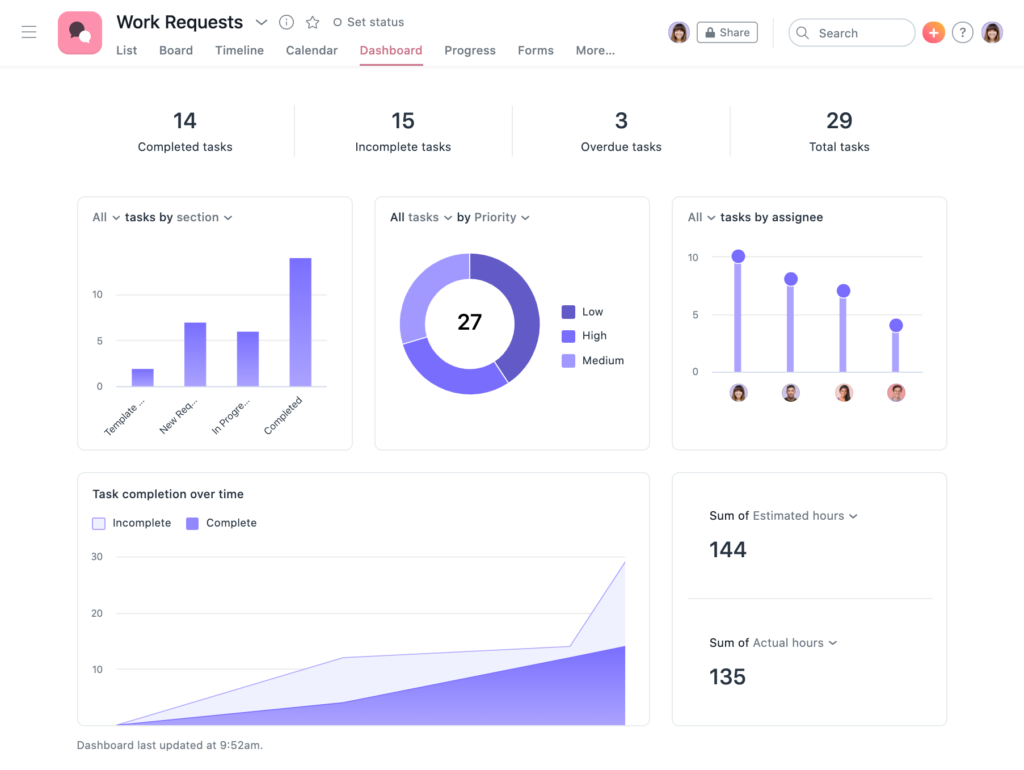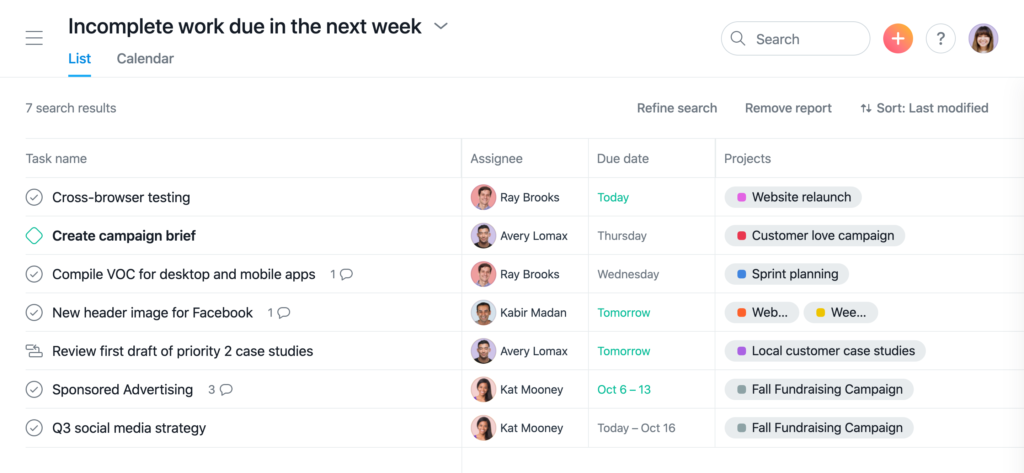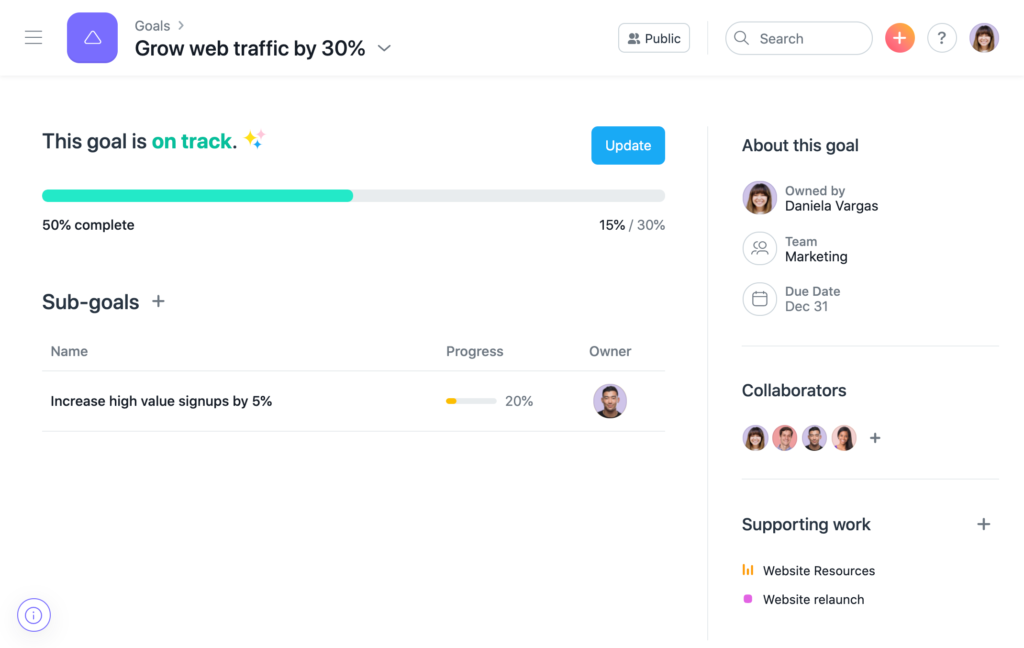Asana tips: How to easily report on data and measure progress

Read this article in French, German, Portuguese, Spanish, or Japanese.
At Asana, we’re big fans of reducing work about work—that pesky 60% of our workday that we spend on rote or duplicative tasks. Think of every time you’ve searched a document for a specific data point, spent precious time chasing for the right stakeholder or approver, or sat through a status meeting that could have been a written report.
For team leads, reporting on work and sharing progress metrics is just another facet of work about work. But with Asana, you don’t have to sacrifice high-impact work in the name of reporting.
Our built-in tools to help you slice and dice data, collect project details, and connect progress updates to your team goals all in one place. Try these four ways to easily report on work, measure progress, and get more time back for the work that matters.
1. Get real-time project insight with Dashboards
Whether you’re managing a content calendar, work requests board, product launch, or any other project in Asana, Dashboards makes it easy to gain real-time, at-a-glance insight into where your project stands.
Dashboards are customizable, so you can visualize and report on whatever project data you need. For example, if you want to see where there are efficiencies or bottlenecks in your team’s workflow, you can use the bar chart to view incomplete, upcoming, or all tasks by Section. Alternatively, if you need to get a sense of how work is distributed across your team, use the lollipop chart and filter by assignee. Or, if you have a numeric custom field, use the numerical custom field sum to see the sum of total project budget or expected hours.

💡Tip: You can click into each chart for a closer look at the underlying tasks.
Once you’ve customized your Dashboards, you can download any chart as a PNG image, and use it in your next status update or progress report. No more manually updating data in a spreadsheet, just click and go.
2. Share updates in just a few clicks with Status
Status makes it easy to keep all of your cross-functional stakeholders in the loop by aggregating all of your project information in one place. Start by selecting the sections you want to include, then use Highlights and Charts to share important project information visually—like completed tasks, relevant milestones, and more.

💡Tip: You can @-mention team members or stakeholders in a status update to shout out great work, loop in cross-functional stakeholders, and move work forward.
3. Search tasks across multiple projects with Advanced Search
With Dashboards and Status, you can easily home in on metrics within a single project. But to report on tasks and data across multiple projects, you need Advanced Search reports.
Advanced Search is the best way to find information in Asana. With Advanced Search, you can run a search based on criteria like who a task is assigned to, which project the task lives in, and when it is due. Once you’ve run an Advanced Search, you can save that information as a report. Reports live in your left-hand side bar, and they always auto-populate with the most recent information. For example, you can create reports to track work you need to follow up on, upcoming high priority tasks, or incomplete work that’s assigned to your direct reports.

💡Tip: You can always edit an Advanced Search report once you’ve created it. Simply open the report and click Refine search in the upper right-hand corner.
4. Measure progress against team and company Goals
At the end of the day, you’re reporting on progress and measuring data in order to see how well your team is progressing towards your goals. But in order to track your goals successfully, you need visibility into how your team’s day to day work contributes to your company goals.
Tracking Goals in Asana allows you to connect everyday work, projects, and Portfolios to your quarterly or yearly objectives. Every Goal has a section for Supporting work, and you can see what Goal your project is supporting in the project or Portfolio’s Progress view. With the context of how work is contributing to your company’s mission, your team members have the information and context needed to do their best work.

💡Tip: When you send a status update, you can @-mention Goals so team members always have the context of what goal their work is supporting.
Reporting as easy as A-B-C
Reporting and measurement are critical activities for highly effective teams—but running reports and compiling data can be a huge time suck. With these four Asana features, you can make reporting and measurement effortless, so your team has the context and details to do their best work, without the time-consuming processes it usually takes to get there. Log in to Asana, and try these features for yourself today.

